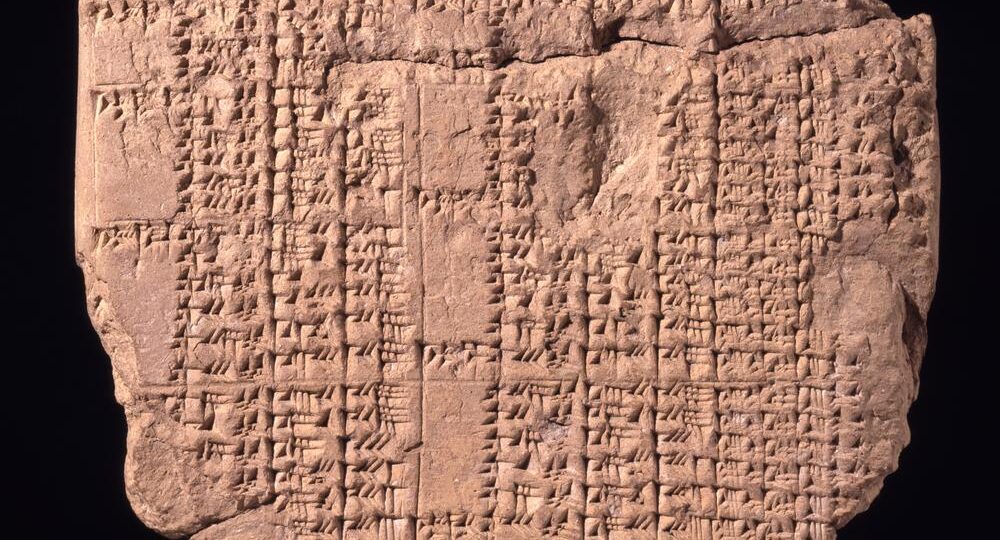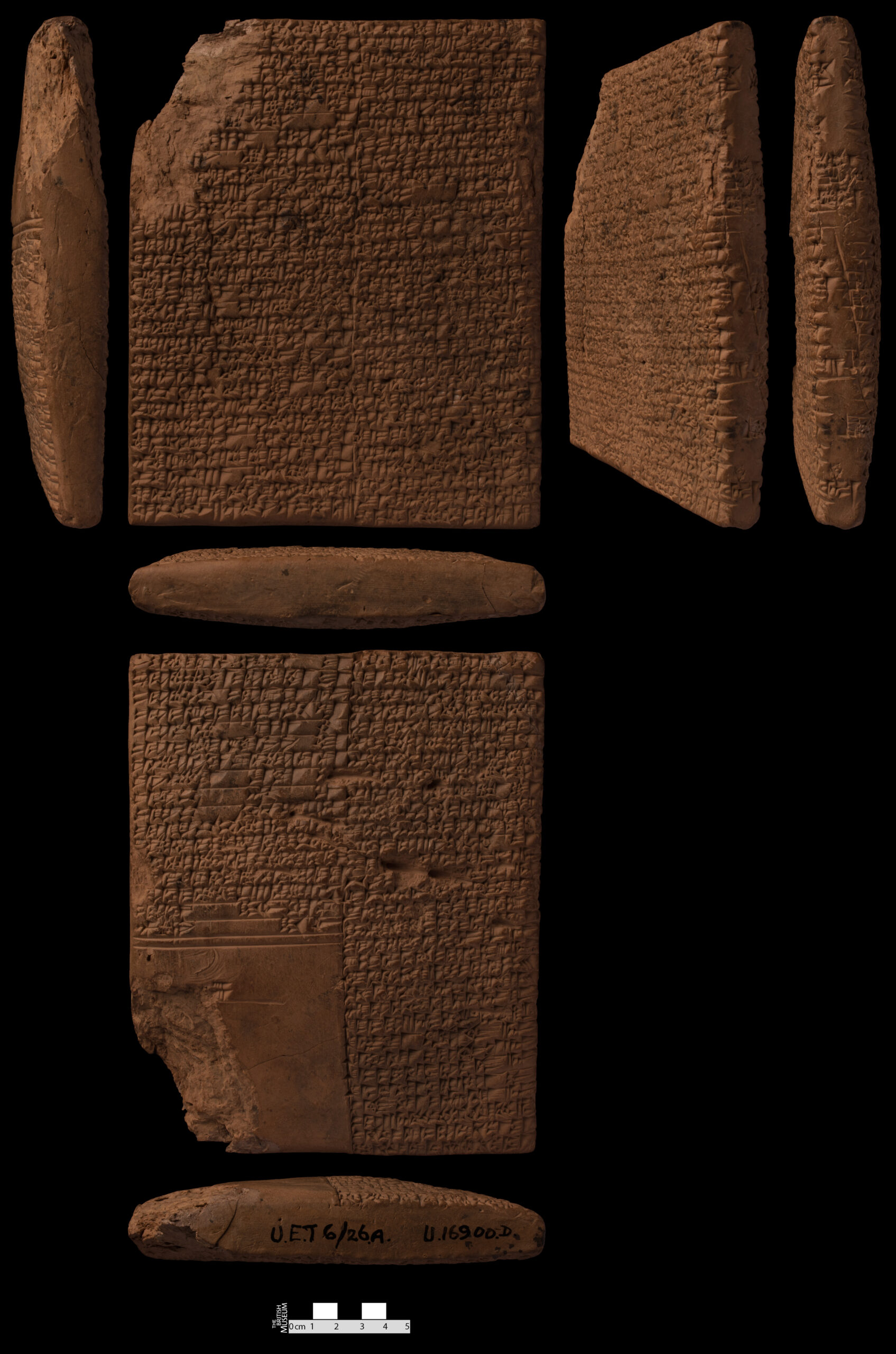To end this second week, and as a last-minute substitution for the erroneously-programmed second day of hoes, we turn to the clock. The water clock, specifically.
In Sumeria, these clocks worked by means of a measured weight of water running out of a cylindrical container through a hole. None of these clocks have survived to be found by modern archaeologists, but we know of their existence from writings on a few tablets. Amongst these is the tablet we’re looking at today. It contains calculations for using a water clock to calculate payments to day and night watchmen, depending on the time of year.
As we all know, as seasons change, so does the length of the day (equator-dwellers excepted). At the latitude of Babylon, the ratio of longest night to shortest night is approximately 3:2. That is to say, the longest night at about 14 hours is 50% longer than the shortest night at about 9 ½ hours. In order to measure out a night watch at the summer solstice, the weight of water required was two mana (approximately one pound or 450 grams). At the winter solstice, the amount required was four mana. So why this discrepancy between ratios? Why 4:2 for the weight of water and 3:2 for the length of time?
I mentioned earlier that the containers used for these water clocks were cylindrical, but also that none have ever been found. How then do we know what shape they were?
We owe the explanation to one Otto E Neugebauer, a mathematician and cuneiform scholar who did much to aid the recognition of the mathematical content of cuneiform texts. Neugebauer recognised that water in a cylindrical container with a hole at the bottom flows out at a different rate depending on how much water remains in the container. The pressure is greater when the cylinder is full and decreases as the water empties. So, given the known rate of flow, He calculated that the only shape these water clocks could have been was cylindrical, or at least prismatic, with the same surface area at the top as at the bottom. Some small clues, some careful cross-referencing of the known facts led to an inescapable conclusion about the physical reality of something never seen in modern times.

